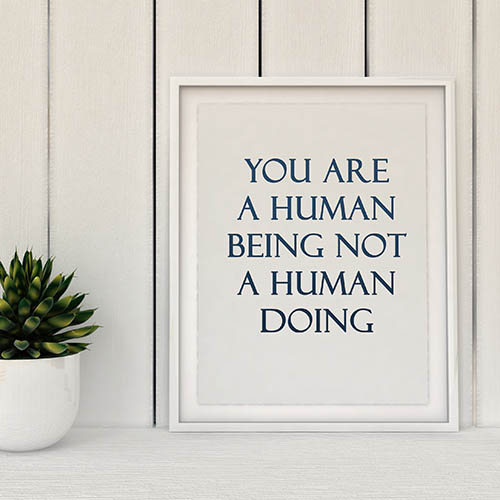Author
Rudolph Victor
Share
Author
Rudolph Victor
Share
Our minds are constantly shifting between focus and distraction. To achieve good mental health, we need to understand the differences between the Mindful, Mind-Fullness, and Mindless states. It’s crucial to recognize and navigate these mindsets to improve our emotional health and connection with others, reduce stress, increase concentration and self-awareness, develop compassion, and boost well-being. By managing our mental states, we can find a greater sense of purpose in our daily lives. Here is the breakdown of each state of mind and the upside and downside of each:
Mindful
Mindfulness is the art of living in the present moment with a heightened sense of awareness, curiosity, and non-judgment. It involves paying close attention to your thoughts, emotions, bodily sensations, and the environment around you without being distracted by the past or future. This level of attentiveness allows you to fully engage with the world and experience each moment with greater clarity and intention. By being mindful, you can observe your thoughts and feelings without being carried away by them, which can lead to an overall sense of calm well-being.
Upside of Mindfulness
Reduced stress and anxiety: Mindfulness helps calm racing thoughts and bring focus to the present, reducing the impact of worries and anxieties.
Improved focus and concentration: Greater awareness of your mind and surroundings enhances your ability to stay on task and avoid distractions.
Enhanced emotional regulation: Mindfulness promotes nonjudgmental observation of emotions, allowing one to manage difficult feelings without becoming overwhelmed.
Increased self-awareness: Paying attention to your thoughts and internal state promotes a better understanding of yourself, leading to more informed decisions.
Greater compassion and empathy: Mindfulness fosters acceptance of yourself and others, improving relationships and reducing judgment.
Boosted well-being: Research links mindfulness to improved physical health markers and an overall sense of contentment.
Downside of Mindfulness
Initial discomfort: Confronting thoughts and emotions without judgment can be challenging at first, especially if you’re used to suppressing them.
Time investment: Developing mindfulness takes practice and consistency. It’s not a quick fix.
Can heighten awareness of negative experiences: While mindfulness helps you manage complex emotions in the long term, it might initially make you more aware of negativity or discomfort present in the moment.
Not a cure-all: Mindfulness is a powerful tool, but it’s not a magic bullet for all of life’s challenges.
Overall: The upsides of mindfulness far outweigh the downsides. The temporary discomfort or time investment is worth the lasting benefits on overall well-being.
Mind-Fullness
A mind-fullness state feels overwhelming, with a constant stream of thoughts, anxieties, and to-do lists racing through your head. It’s easy to get distracted from the present moment by the slightest external stimulus or the nagging of your own internal chatter. This leads to ruminating, endlessly obsessing over past events or fixating on potential future problems. The consequences of this mind-full state can be serious, including stress, anxiety, poor focus, and difficulty sleeping.
Upside of Mind-Fullness
Increased Awareness: A busy mind can highlight areas of stress, unresolved issues, or anxieties that need attention. These may be things we consciously or subconsciously avoid.
Motivation for Change: The discomfort of a mind-full can be a powerful catalyst for seeking positive solutions, whether it’s adopting stress-management techniques, mindfulness practices, or addressing the root causes of the mental clutter.
Potential for Creativity: While overwhelming, the constant flow of thoughts in a mind-full state might hold the seeds of creative insight or problem-solving if harnessed properly.
Downside of Mind-Fullness
|Stress and Anxiety: A racing, chaotic mind is a significant contributor to stress and anxiety disorders. Overthinking and rumination can become negative feedback loops.
Sleep Impairment: It’s hard to quiet the mind and fall asleep when thoughts and worries don’t stop.
Poor Concentration: The constant distractions of a mind-full state make focused attention and productivity difficult.
Emotional Reactivity: Without space for processing, a mind-full state can lead to increased irritability, impulsive decisions, and strained relationships.
Missing out on the Present: Being fixated on the past or future prevents enjoyment and presence in the current moment.
Overall: Mind-fullness isn’t inherently negative. It becomes problematic when it’s chronic or overwhelming. Harnessing its upsides requires developing skills to manage the mental flood. Mindfulness techniques provide a powerful tool in the right focused hands.
Mindlessness
Being mindless in daily life means going through the motions and lacking conscious attention to your actions or the world around you. It involves being mentally disengaged from the present moment, whether lost in a stream of thoughts or performing tasks without focus. In essence, being mindless means acting without truly thinking or being fully present in the here and now.
Upside of Mindlessness
Efficiency for routine tasks: Mindlessness can be helpful for familiar, repetitive tasks that don’t require much conscious thought (e.g., brushing your teeth or simple chores). It allows your brain to conserve energy.
Mental rest: Sometimes, letting your mind wander aimlessly can provide a break from focused thinking or problem-solving, allowing for a sense of relaxation.
Flow states: In activities like sports, art, or music, getting “lost” in the moment without overthinking can lead to flow states and improved performance.
Upside of Mindlessness
Errors and accidents: Mindlessness can lead to careless mistakes, forgetting important details, or even accidents if you’re not paying attention to your surroundings.
Missed experiences: If excessive, life is passing you by. You might miss out on enjoyable moments or opportunities because you’re mindlessly droning.
Poor decision-making: Relying solely on autopilot can lead to impulsive or poorly thought-out decisions.
Disconnection: Mindlessness can cause you to be disconnected from yourself, others, and your environment.
Increased stress: While temporary mindlessness can provide rest, chronic mindlessness can make it harder to manage stress and difficult situations, as you’re not fully present to address them.
Overall: Mindlessness is a state of reduced awareness in which one is disengaged from the present moment. While it can sometimes be helpful for routine tasks, mindlessness can lead to a sense of disconnection and even worsened stress management. Finding a balance between mindful presence and the occasional benefits of mindlessness is vital.
The Bottom Line
Our brain relies on some degree of automatic functioning to handle the tremendous amount of information we encounter daily. Mindfulness is the goal, while Mind-full and Mindlessness represent less ideal states we shift into and out of. Techniques like meditation, deep breathing, and sensory awareness can help train your mind to be more present and break out of the other two states. The goal isn’t to become mindful 100% of the time but to find a better balance between mindful presence and allowing some strategic mind-wandering for optimal well-being and functioning.
Mindfulness Resources
Mindful.org: A fantastic resource with “Getting Started” guides on meditation and mindfulness. Offers a wide variety of practices and insights. (https://www.mindful.org/meditation/mindfulness-getting-started/)
The Free Mindfulness Project: Provides numerous free mindfulness resources, including audio meditations, downloadable guides, and more. (https://www.freemindfulness.org/download)
PositivePsychology.com: Includes an extensive collection of mindfulness exercises and activities, explained clearly and with downloadable PDFs. (https://positivepsychology.com/mindfulness-exercises-techniques-activities/)
Crisis Centre BC: Offers a “Mindfulness Tools” section with simple practices, explanations, and links to guided meditations. (https://crisiscentre.bc.ca/mindfulness/)
Guided Meditations
UCLA Mindful Awareness Research Center: Features a library of free guided meditation recordings on various themes. (https://www.uclahealth.org/marc/)
Mindful Practices: Provides a variety of resources, including guided meditations, to support social and emotional learning and well-being. (https://mindfulpractices.us/)
Planetmeditate.com
Quick and Effective Meditation Practices for Starters: A Beginner’s Guide to Inner Calm – Planet Meditation. https://planetmeditate.com/quick-and-effective-meditation-practices-for-starters/






